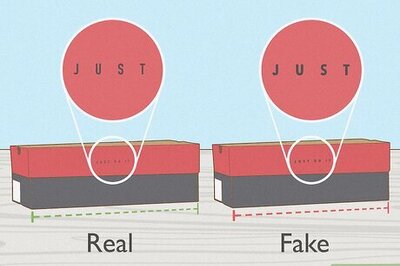
views
New York: They exist for only seconds at most in real life, but they've gained immortality in chemistry: Two new elements have been added to the periodic table.
The elements were recognized by an international committee of chemists and physicists. They're called elements 114 and 116 for now - permanent names and symbols will be chosen later.
You're not likely to run into any of this stuff. Scientists make them in labs by smashing atoms of other elements together to create the new ones.
"Our experiments last for many weeks, and typically, we make an atom every week or so," said chemist Ken Moody of the Lawrence Livermore National Laboratory, who's part of the discovery team.
In contrast to more familiar elements like carbon, gold and tin, the new ones are short-lived. Atoms of 114 disintegrate within a few seconds, while 116 disappears in just a fraction of a second, Moody said.
Both elements were discovered by a collaboration of scientists from Livermore and Russia. They made them by smashing calcium ions into atoms of plutonium or another element, curium. The official recognition, announced last week, cites experiments done in 2004 and 2006.
In the periodic table, the number of an element refers to the number of protons in the nucleus of an individual atom. Leading the list is hydrogen (H) with one. Sodium (Na) has 11, Iron (Fe) has 26, and silver (Ag) has 47.
In the past 250 years, new elements have been added to the table about once every 2 1/2 years on average, said Paul Karol of Carnegie Mellon University. He chaired the committee that recognized the new elements.
Despite the number 116, the new additions bring the total number of recognized elements to just 114. That's because elements 113 and 115 haven't been officially accepted yet.
Moody said he hasn't talked to his colleagues about what element names to propose to an international group of scientists for approval. He does know the names will have to end in "ium."
For now, the elements have temporary names derived from their numbers.
In recent decades, new elements have generally been named for famous scientists, producing such monikers as nobelium and einsteinium, notes Peter F. Rusch, a consultant in Mountain View, Calif., who chairs the American Chemical Society committee on nomenclature, terminology and symbols.
Before the two newcomers, the most recent addition to the periodic table came two years ago. Element 112 was named copernicium in honor of astronomer Nicolaus Copernicus.
Making new elements is just a byproduct of an effort to discover things about the atomic nucleus, Moody said.
"It's just basic science," he said. "And kind of fun."


















Comments
0 comment